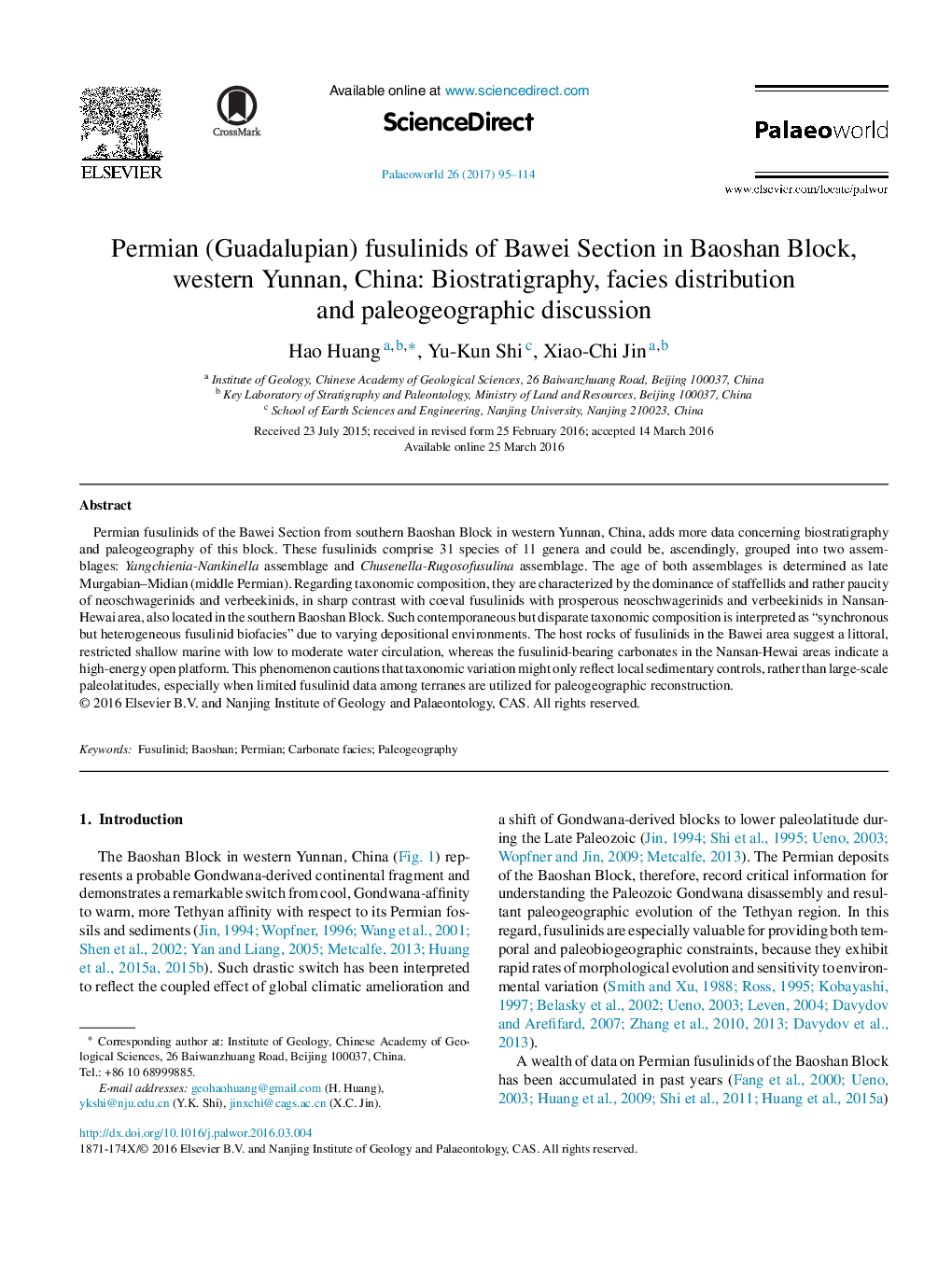| Article ID | Journal | Published Year | Pages | File Type |
|---|---|---|---|---|
| 5788260 | Palaeoworld | 2017 | 20 Pages |
Permian fusulinids of the Bawei Section from southern Baoshan Block in western Yunnan, China, adds more data concerning biostratigraphy and paleogeography of this block. These fusulinids comprise 31 species of 11 genera and could be, ascendingly, grouped into two assemblages: Yangchienia-Nankinella assemblage and Chusenella-Rugosofusulina assemblage. The age of both assemblages is determined as late Murgabian-Midian (middle Permian). Regarding taxonomic composition, they are characterized by the dominance of staffellids and rather paucity of neoschwagerinids and verbeekinids, in sharp contrast with coeval fusulinids with prosperous neoschwagerinids and verbeekinids in Nansan-Hewai area, also located in the southern Baoshan Block. Such contemporaneous but disparate taxonomic composition is interpreted as “synchronous but heterogeneous fusulinid biofacies” due to varying depositional environments. The host rocks of fusulinids in the Bawei area suggest a littoral, restricted shallow marine with low to moderate water circulation, whereas the fusulinid-bearing carbonates in the Nansan-Hewai areas indicate a high-energy open platform. This phenomenon cautions that taxonomic variation might only reflect local sedimentary controls, rather than large-scale paleolatitudes, especially when limited fusulinid data among terranes are utilized for paleogeographic reconstruction.
